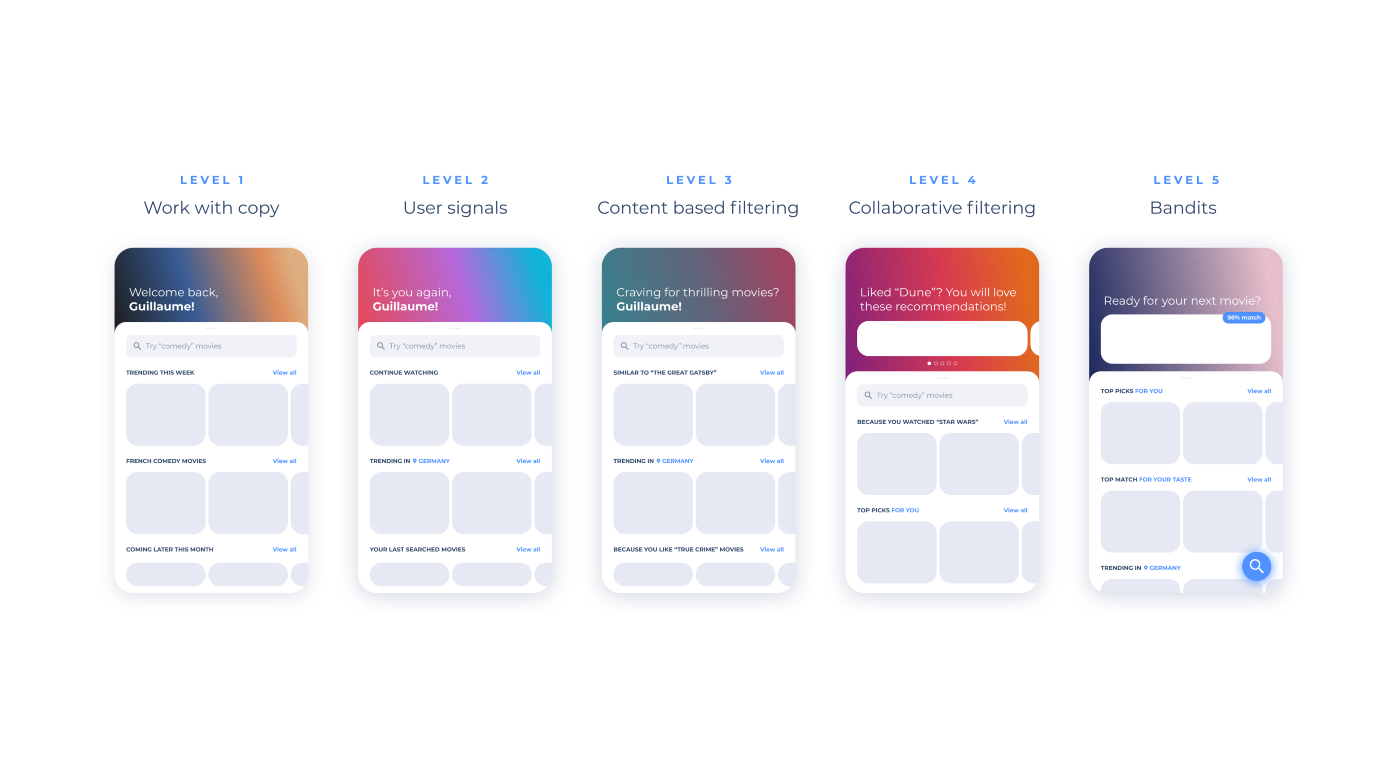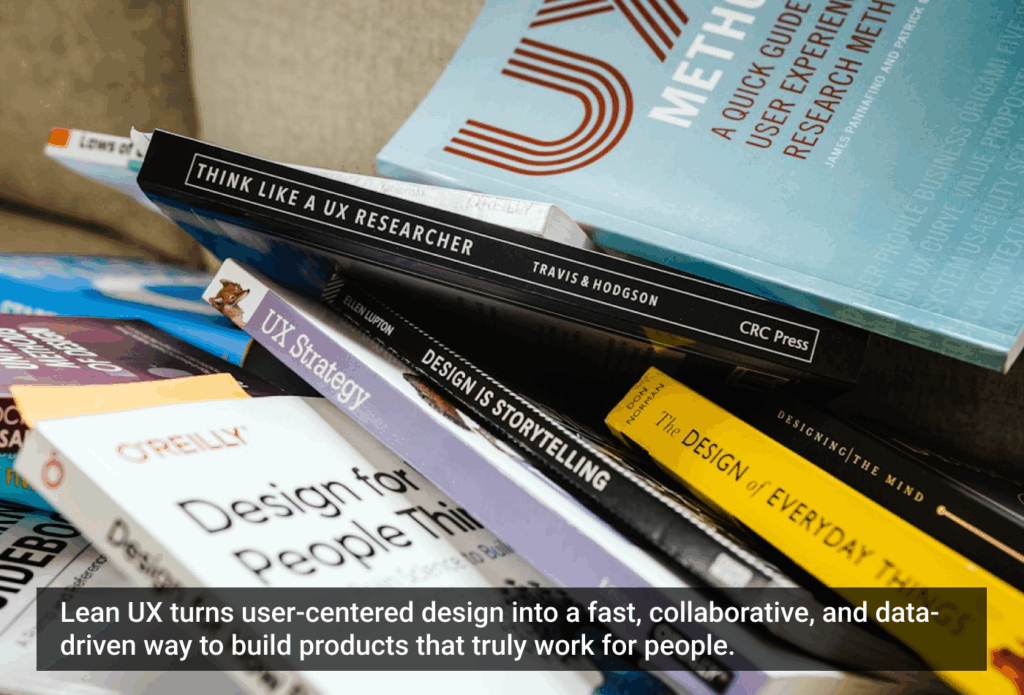Personalization can unlock many opportunities within your product, throughout my experience, it proved to be a powerful tool for engagement, increasing customer retention, and can also be beneficial to acquiring new customers.
It’s such an easy concept to give every user exactly what they’re looking for, but behind the curtain, it requires a solid understanding of how recommender systems work to serve highly relevant content to your end-user.
Level 1.1: Work with your copywriters
When speaking about personalization, the bare minimum you can bring with a really low cost is to work closely with your copywriters. A copy can be a powerful tool to bring a more delightful product experience. From a simple “Good morning, Dave!” to giving special deals on your customer’s birthday.


Level 1.2: Be creative
Imagery and icons can play a major role in making your product feel more personalized. For example, either having seasonal images (Autumn/Winter/Summer/Fall) or small touches on the icons.
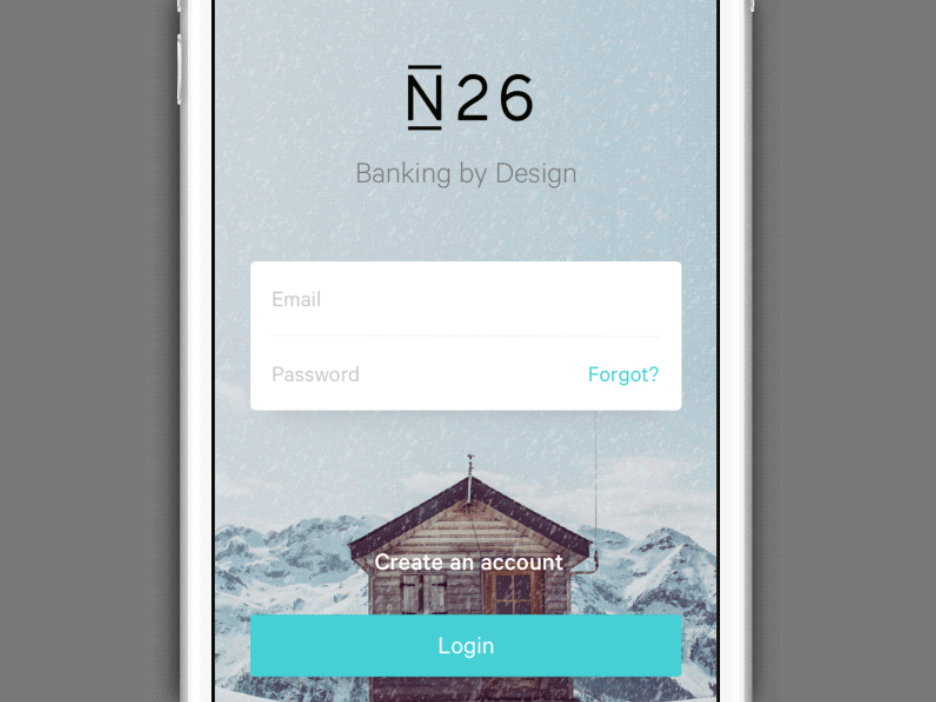
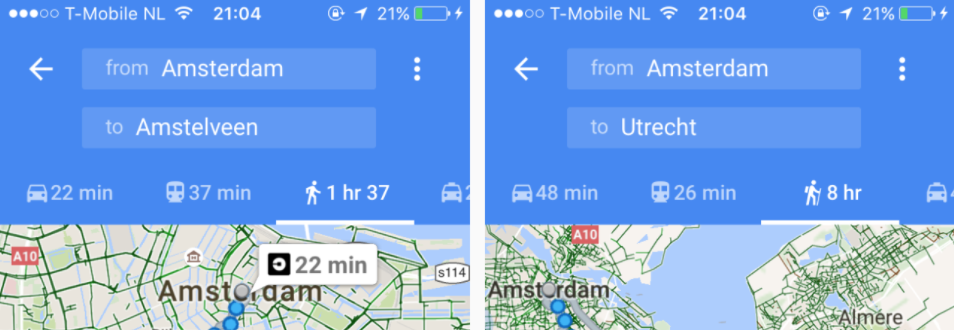
Level 2: User signals
A crucial part of personalizing your product is getting to know your users in the first place. They are endless user signals you might think of, but let’s start with the most common ones:

- Location: It’s easy to get an approximate location, from less accurate to precise results: currency selected, user device language, sim card info, IP address, wifi name, phone geolocation.
- Device type and browsers: Depending on your product, knowing if your user is using the desktop web or mobile app experience of your product can be really useful in understanding what your user is looking for. Browsers can also tell a lot, for example, a user on Google Chrome might be more willing to sign-up using Google.
- User actions: Either pressing the like button on instagram, letting the ads roll on youtube, swiping down on Tiktok or peeking on the last trendy book on Amazon. You have to find within your product these user actions, that can tell you a lot about what your users are interested into.
“There’s 57 signals that Google looks at: where you’re sitting, what computer you’re on, which browser you’re using, … that it uses to personally tailor your personalized results.” Google engineer
Level 3: Content-based filtering
Content-based filtering is the idea behind bucketing your offerings/products into categories. For example, Spotify has a “Disco” or “Rock” category, Netflix has a “Horror” or “Comedy” category, and Amazon has an “Electronics” or “Books” category.
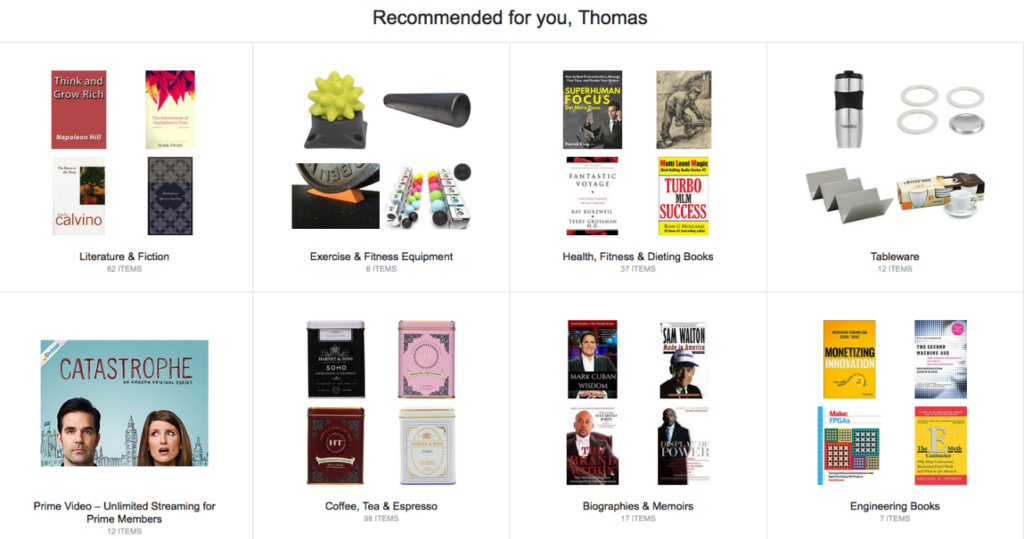
Spotify uses natural language processing (Natural language processing strives to understand text or voice data) to scrap large amounts of data written in blog posts, articles and discussions about specific artists. It tracks what people have been saying about that artist, what other artists have written and other songs that might be mentioned alongside. System identifies descriptive terms, nouns and phrases and associates them with the specific artist or song.

The idea is that if your user engages within one of these categories, you can easily highlight offers that are similar to what your user is looking for. In practice, these systems are easy to implement but don’t allow a high level of personalization and might feel a little static to your end-user.
Cold start problem: when speaking about recommendations, the “cold start” simply means that you do not know enough about your user to provide the best possible result. This is being solved usually within a “preference” onboarding asking users to pick topics they are interested in.

Level 4: Collaborative filtering
Collaborative filtering is the most popular method used in the tech industry. In the context of Netflix services, its purpose is to predict which movies a user might like by looking at what other users who watched this movie also watched. It’s all about highlighting content from users with a similar taste.

At this point, it is recommended to partner with a data scientist in order to build recommendation models based on collaborative filtering.

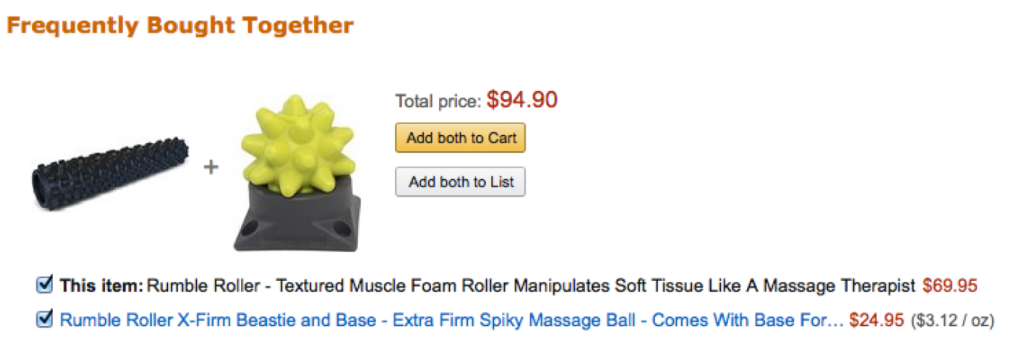
A powerful method as such can be used in many different ways. In the case of Amazon, one way it’s being used is to increase basket sizes by packaging their products with “Customers who bought this item also bought” or “Frequently bought together” sections.
Level 5: “Bandits” models
Bandits are where our learning algorithm can participate in the data collection process, for example, we might recommend something utterly irrelevant if the algorithm has a good reason to believe that it will learn something valuable for its long-term performance.
At Booking.com, there are several reinforcement learning models (such as the Looper and Robin Hood) used to determine the order of UI elements on different areas of the site.
This is really useful if you detect different archetypes (patterns of behavior) within your product. What if you discover your users might be listening to a lot of rock music but also love rap from time to time. This is a problem solved by reinforcement learning by detecting user behavior changes. It can also allow you to be more context and time-aware by seeing if your user might want different things in different contexts.
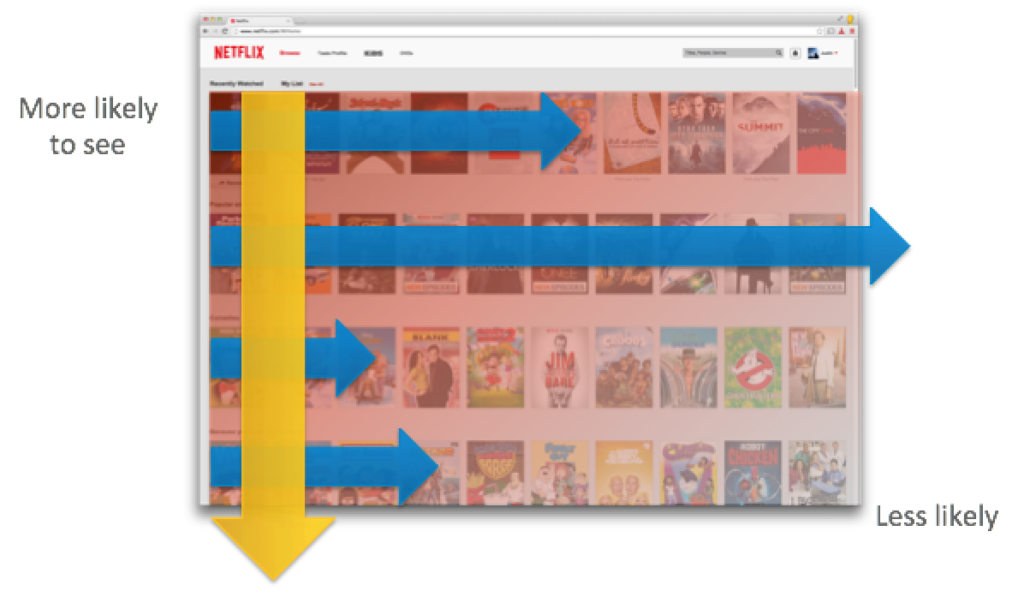
The Spotify home screen is organized in rows of playlists which Spotify calls “shelves” and playlists inside those shelves called “cards”. Each shelf has a theme that describes the content of them like “Made for you” or “Inspired by your recent listening”. BaRT’s (Bandits for Recommendations as Treatments) task is to rank cards in shelves and to rank shelves themself. To do that BaRT is using Multi-armed bandit algorithms.
4 things to keep in mind!
- Data processing and usage is a sensitive topic, it is highly recommended to involve your legal department in all these conversations, together with having an eye on being GDPR compliant.
- Biases are everywhere. Make sure to constantly remind your team of them. Diversity makes us stronger, so make sure to get people with different opinions and cultural background in your team.
- Filter Bubble: Recommendations can narrow down users into a single thread of ideas or products. Be careful to regularly highlight different opinions or ideas to your user. If you want to learn more, I recommend this great talk from Eli Pariser.
- Allow user to give feedback on your recommendations, from thumbs up/down vote for any recommendation to simply being able to remove a suggestion, this will bring huge insights to your team in understanding what can be improved and where.


